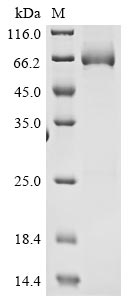Enhance your signal transduction studies with our Recombinant Mouse Pde9a, also known as High affinity cGMP-specific 3',5'-cyclic phosphodiesterase 9A. Produced in E.coli, this protein plays a crucial role in deciphering the intricate pathways of cellular signaling.
Provided as a full-length protein (1-534aa), our Pde9a ensures a complete understanding of its function and structure. The protein is expressed with a N-terminal 6xHis-tag, providing streamlined purification and reliable stability. Our Recombinant Mouse Pde9a, with a purity of over 85% as determined by SDS-PAGE, meets the rigorous demands of scientific research. Choose between the liquid form for immediate use or lyophilized powder for long-term storage, to suit your research workflow.




